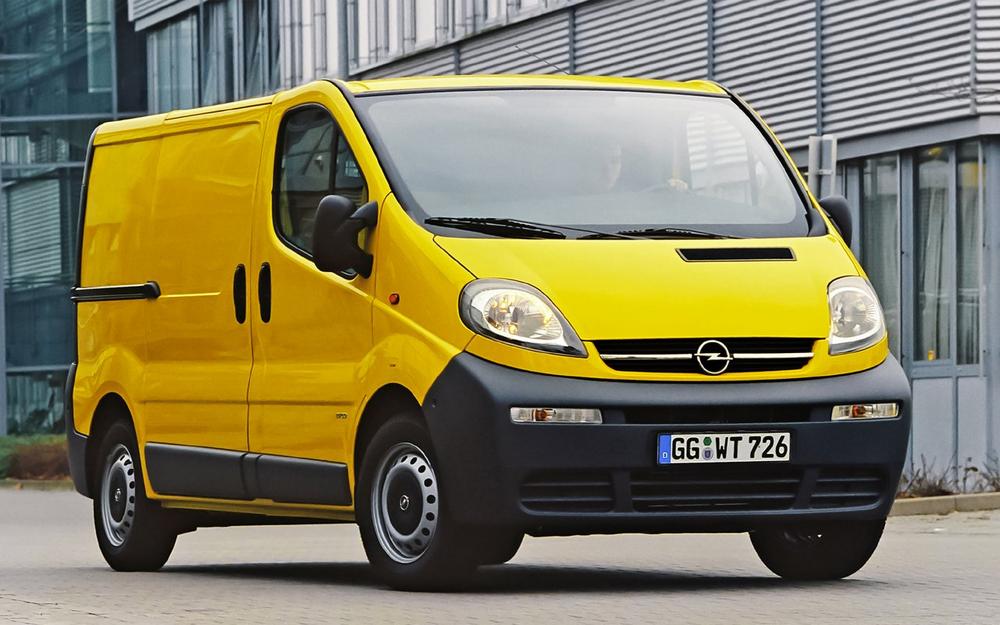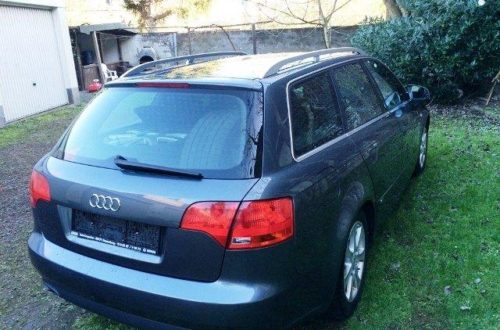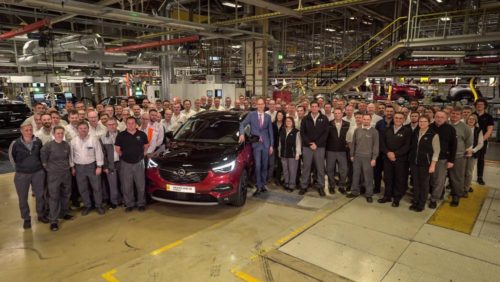
Many Happy Deliveries! Opel Vivaro Celebrates 20th Birthday
- Brussels LCV show 2001: World premiere of Opel van with passenger car qualities
- International Van of The Year: Vivaro takes title for first time in 2002
- More than one million units: Midsize van is key player in Opel’s LCV strategy
- Continuing the tradition: Third generation Vivaro launched in 2019
- Emissions-free transportation: Visionary 2010 study preceded today’s Vivaro-e
The Opel Vivaro this year celebrates its 20th birthday! Following its world premiere at the Brussels Light Commercial Vehicle Show in January 2001, the van from the German manufacturer has become the spearhead of Opel’s light commercial vehicle (LCV) strategy. The first generation Vivaro is also the predecessor of the current International Van of The Year – the emissions-free, all-electric Opel Vivaro-e.
More than one million units of the Vivaro have now been manufactured, underlining not only its success and popularity among customers but also the importance of LCVs to Opel. The new third generation has been on sale since the end of March 2019, with the model range including not only diesel-powered variants but also the all-electric Vivaro-e – the realisation of an idea that originated in 2010 with the Vivaro-e Concept.
The Vivaro was born of a joint venture between Opel and Renault. In December 1996, the companies agreed to offer customers the benefits of their engineering skills and high quality standards by cooperating in the area of light commercial vehicles (LCV).
Thanks to the joint venture, Opel was able to quickly fill an opportunity for LCVs up with up to 3.5 tonnes gross vehicle weight (GVW). The Opel Arena – the Vivaro’s immediate predecessor – came onto the market only 12 months later, followed by the Movano in January 1999.
Opel and Renault equally invested a total of €700 million in the development and production of the Vivaro. It took only 35 months to come up with the all new model, with responsibilities shared between the partners. Renault concentrated on the packaging and the powertrains, while Opel was responsible for manufacturing. Production of both the Vivaro and the Renault Trafic sister model started at the IBC Vehicles plant in Luton, England.
Innovative: Vivaro design combined attractive appearance with high efficiency
The innovative design was unique among LCVs, combining an attractive appearance with user-oriented functionality and high efficiency. “With the Vivaro, we paid as much attention to the styling as we would with a passenger car”, stated Hans Seer, Opel’s chief designer at the time. The highlight of the futuristic design was the so-called “Jumbo roof”. The domed cabin not only offered the driver and front passengers an exceptional amount of headroom, it also enabled particularly easy entry and egress – an especially important criterion for vehicles in this market segment, which are often used as delivery vans.
At the launch in early 2001, the front-wheel drive Vivaro was powered by two economical 1.9-litre common rail diesels (59 kW/80 hp and 74 kW/100 hp) and a lively 2.0-litre 16-valve petrol engine (88 kW/120 hp). Shortly afterward they were joined by a powerful 2.5-litre common rail diesel with 98 kW (133 hp). Apart from the base diesel (five-speed), all powertrains featured a six-speed manual transmission, with the shift-lever in the centre console for optimum ergonomics and use of space.
In addition to the engines and the design, the Vivaro’s other strengths included ride and road holding that were comparable to those of a passenger car – attributes that were not lost on the jury of the International Van of The Year Award (IVOTY) that elected the Vivaro and its sister model, the Renault Trafic, as winners of the eponymous 2002 trophy.
With a GVW of 2.7 or 2.9 tonnes, Opel offered the Vivaro in more than 20 variants. Customers could choose from two wheelbases – 3,098 or 3,498 mm – and three body styles (panel van, combi or platform chassis). Each version provided loads of space. The short wheelbase van and combi already offered five cubic metres of cargo capacity; the longer version of the van could even accommodate three Euro pallets in its almost six cubic–metre cargo compartment.
As professional drivers spend most of their time behind the steering wheel, the interior designers of the Vivaro devoted much of their attention to the comfort and ergonomics of the cabin. Naked metal was nowhere to be seen; the interior was fully trimmed with tough, easy to clean materials. With integrated navigation, telephone and CD-changer, the state-of-the-art infotainment systems from Opel passenger car models set new standards for LCVs.
Safety benchmark: Front and side airbags, 3-point seat belts for all occupants
Typically for Opel, the Vivaro represented a benchmark in terms of safety. A driver airbag and three-point safety belts for all occupants were standard in all model variants; front passenger and side airbags were optionally available. With McPherson struts at the front and, in the best Opel tradition, a torsion beam plus Panhard rod at the rear, the Vivaro also provided high active safety and a comfortable ride. Disc brakes at all four wheels (ventilated at the front) and electronically controlled, four-channel ABS and brake-force distribution set equally high safety standards.
Another bonus point of the Vivaro was the high level of serviceability. Inspections were required only after 30,000 km or two years, while changes of brake fluid were necessary only every 120,000 km. A three-year mobility guarantee as standard and a 12-year anti-corrosion warranty provided further protection. Thanks to the service and repair-friendly design, the Opel LCV was also a class-leader in insurance ratings.
Opel fostered even more ambitious plans for the Vivaro and at the IAA for light commercial vehicles in 2010, sowed the seeds of an idea that would germinate in 2020 in the shape of the new Vivaro-e. With the world premiere of the Vivaro-e Concept, Opel presented the study of an electrically driven panel van with an extended range of more than 400 km. Featuring 5.0 m3 of cargo space, a payload of 750 kg and an 111 kW electric motor, the study represented a concept that made environmentally friendly e-mobility also interesting for light commercial vehicles.
By 2014, 600,000 units of the Vivaro had rolled off the production lines. The second-generation model premiered that same year featuring an advanced new diesel, increased functionality and a new look that adopted the design language of contemporary Opel passenger cars. The range consisted of two lengths and two roof heights available as panel van, combi, crew cab and bus in numerous configurations.
Under the bonnet the Vivaro B offered two all-new turbo diesel engines: the 1.6 CDTI and the state-of-the-art 1.6 CDTI BiTurbo with sequential turbocharging and twin intercoolers. This high-tech power unit combined excellent performance with moderate thirst. Fuel consumption of the new engines sank by more than one litre in the combined cycle.
“Durchquerung”: Adventurer Reinhold Messner explores the Vivaro’s interior
Opel’s advertisements are famous for their originality and the campaign for the second generation Vivaro that started in September 2014 was no exception. In order to promote the new model’s exceptional spaciousness, the brand with the Blitz sent the mountaineer, adventurer and extreme sportsman, Reinhold Messner, on a “Durchquerung des Vivaro” – an expedition through the Vivaro’s interior. The video shows how Opel’s long-standing partner Messner, together with his Sherpa, prepared and ultimately began their journey. “In three months we should come out the other side”, said Messner, tongue firmly in cheek, before climbing into the darkness of the van’s cavernous cargo compartment. Not entirely coincidentally, the video and the accompanying advertising campaign premiered on Messner’s 70th birthday.
Opel manufactured about one million units of the Vivaro A and B. The third generation has been in production since 2019, offering a wide range of advanced technologies, including IntelliGrip traction control, a 180-degree rear-view camera and multimedia infotainment.
The third generation also completes the journey to e-mobility imagined by the 2010 study. The new battery electric Vivaro-e enables professionals to benefit from uncompromised zero-emission mobility and choose between two sizes of lithium ion battery, depending on their needs. With 75 kWh for a range of up to 330 kilometres, or with 50 kWh for up to 230 km, both in the WLTP1 cycle.
Last, but by no means least, the Vivaro-e – like its predecessor in 2002 – is also International Van of the Year. Opel’s new all-electric LCV was elected winner of the 2021 award by the IVOTY jury of 24 expert journalists and publishers from independent magazines.
[1] Range determined according to WLTP test procedure methodology (R (EC) No. 715/2007, R (EU) No. 2017/1151). The actual range can vary under everyday conditions and depends on various factors, in particular on personal driving style, route characteristics, outside temperature, use of heating and air conditioning and thermal preconditioning.
Opel Automobile GmbH
Bahnhofsplatz
65423 Rüsselsheim
Telefon: +49 (6142) 7-70
Telefax: +49 (6142) 77-8409
http://de-media.opel.com/de
Group Manager International Product Communications
Telefon: +49 (6142) 69-21574
E-Mail: martin.golka@stellantis.com
![]()





